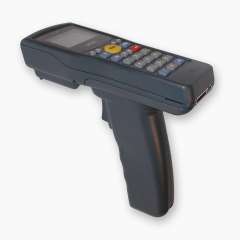Skip to main content
-
- Android 11
- Barcode Scanner 1D/2D
- 5 Inch Display
- NFC
- WLAN, GPRS, Bluetooth
- GPS
- 13 MP Camera
-
- Light and ergonomic
- Barcode Scanner 1D/2D
- Real Time Clock
- Li-Ion removable Battery
-
- Android 9.0
- 8 Inch Display
- Barcode Scanner 1D/2D
- RFID Reader UHF
- NFC
- 4G
- WLAN, GPRS, Bluetooth
- GPS
- Camera
- IP65
-
- Android 11
- Barcode Scanner 1D/2D
- 4 Inch Display
- Hardware Keyboard
- NFC
- 4G/LTE
- WLAN, GPRS, Bluetooth
- GPS
- Camera
- Optional Pistol Grip
-
- Lightweight and ergonomic
- 1D Barcode Scanner
- Real Time Clock
- Li-ion replaceable battery
-
- Android 11
- Barcode Scanner 1D/2D
- 4 Inch Display
- NFC
- Optional Pistol Grip
- 13 MP Camera
- IP67
-
- Android 11
- 1D/2D Barcode Scanner
- 5.2 Inch Display
- NFC
- RFID Reader LF/HF
- WLAN Dual Band, WWAN 2G 3G 4G, Bluetooth
- GPS/AGPS, GLONASS, BeiDoue
- 13 MP Camera
- Iris Recognition (optional)
- IP67
-
- Android 11.0
- Barcode Scanner 1D/2D
- 5.5 Inch Display
- NFC
- Optional Pistol Grip
- 13 MP Camera
- IP65
-
- Android 11
- Barcode Scanner 1D/2D
- 5,2 Inch Display
- RFID HF/NFC
- WLAN Dual-Band, WWAN 2G 3G 4G, Bluetooth
- GPS/AGPS, GLONASS, BeiDou
- 13 MP Camera
- Iris Recognition (optional)
- IP65
-
- Android 11
- Barcode Scanner 1D/2D
- 5.5 Inch Display
- NFC
- Optional Pistol Grip
- 13 MP Camera
- IP65
